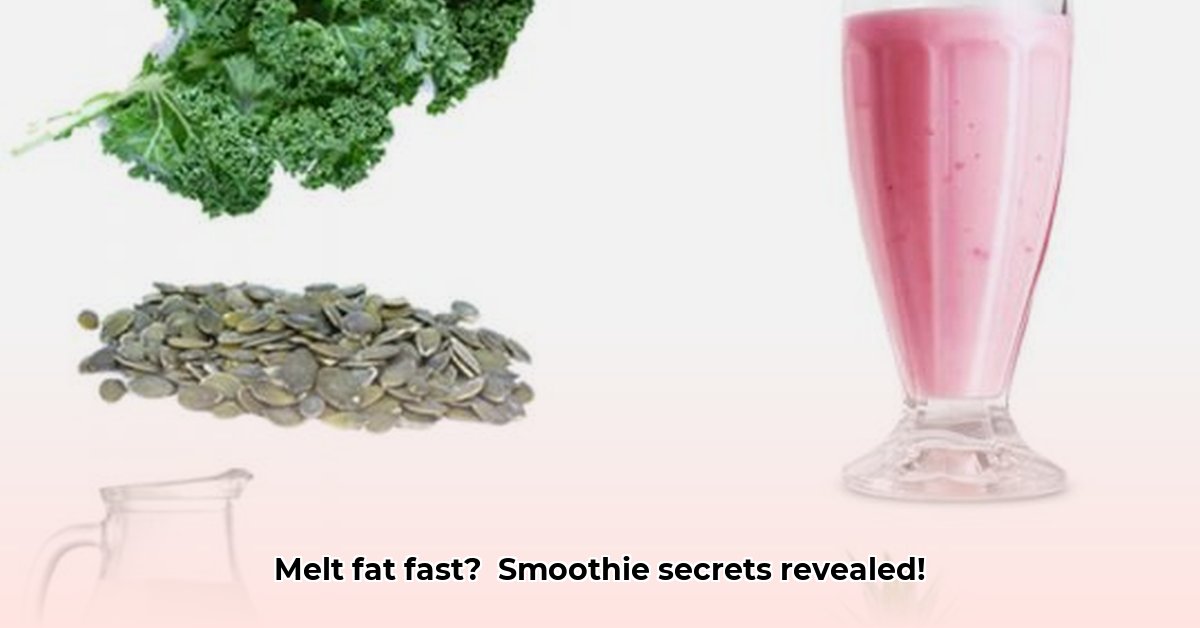
Want to lose weight and feel healthier? Meal replacement smoothies might be the perfect addition to your wellness journey! This expert guide will help you choose the best smoothies for weight loss, highlighting their benefits (and potential downsides), offering delicious recipes, and providing tips from registered dietitians to make this a sustainable part of your healthy lifestyle.
Understanding the Nutritional Powerhouse of Weight-Loss Smoothies
A successful weight-loss smoothie is a balanced blend of macronutrients – protein, healthy fats, and complex carbohydrates. Protein keeps you feeling full and satisfied, while healthy fats provide sustained energy. Complex carbs offer long-lasting fuel without the sugar crash; this prevents mid-afternoon energy slumps.
Don't just rely on trendy "superfoods" like acai and chia seeds, although those are fantastic additions! The real key is the overall balance of nutrients. Too much of one nutrient can hinder the benefits of others.
Crafting Your Winning Smoothie: A Simple, 5-Step Guide
Making a fantastic weight-loss smoothie is surprisingly simple. Follow these steps:
Choose Your Protein Source: This is crucial for satiety! Great options include Greek yogurt (high in protein and calcium), protein powder (whey, soy, or plant-based – choose what suits you best), or nut butters (peanut, almond, or cashew).
Add Healthy Fats: These contribute to sustained energy and fullness. A tablespoon of nut butter, avocado, or chia seeds will do the trick. Remember to use fats in moderation.
Include Complex Carbohydrates: Berries, spinach, banana, or oats are excellent choices for adding sweetness and essential nutrients without spiking your blood sugar. Berries are particularly rich in antioxidants.
Select Your Liquid: Water is always a fantastic choice. Unsweetened almond milk, coconut water, or a splash of green tea also add flavor and benefits. Adjust the liquid amount for desired consistency.
Blend and Enjoy (Mindfully!): Experiment with different combinations! Remember portion control; even healthy smoothies can contribute to weight gain if consumed in excessive quantities.
Smoothie Recipe Inspiration: Fuel Your Weight Loss Journey
Here are three delicious and nutritious smoothie recipes to get you started:
Green Goodness: Blend spinach, banana, almond milk, a scoop of protein powder, and chia seeds. The spinach blends in seamlessly, adding a nutritional boost.
Berrylicious Delight: Combine mixed berries, Greek yogurt, a small amount of oats, and a touch of honey or maple syrup (optional, for added sweetness). This smoothie is packed with antioxidants and fiber.
Tropical Escape: Blend mango, pineapple, coconut water, and a scoop of protein powder. The natural sweetness of the fruits makes this a refreshing and delicious option.
Preparing smoothies in advance can simplify your week and enhance your commitment to healthy eating. Making a large batch on the weekend saves you time during busy weekdays.
A Nutritional Snapshot: Comparing Smoothie Types
The following table shows approximate nutritional values for the sample smoothies (values will vary based on specific ingredients and quantities).
| Smoothie Type | Protein (g) (approx.) | Fiber (g) (approx.) | Calories (approx.) |
|---|---|---|---|
| Green Goodness | 20-25 | 7-10 | 300-350 |
| Berrylicious Delight | 18-22 | 8-12 | 280-320 |
| Tropical Escape | 15-20 | 5-7 | 250-300 |
Note: These are estimates. Actual values depend on ingredient brands and quantities.
The Ups and Downs: Weighing the Pros and Cons of Meal Replacement Smoothies
Meal replacement smoothies offer several advantages but also have potential drawbacks:
Advantages:
- Convenience: Perfect for busy schedules.
- Customization: Easily tailored to your needs.
- Nutrient-Rich (when made correctly): They can provide vitamins, minerals, and essential nutrients.
- Weight Management Support: They can effectively support weight loss as part of a balanced diet.
Potential Drawbacks:
- Calorie Control: Be mindful of portion sizes.
- Nutrient Deficiencies: If not well-balanced, they may lack certain nutrients.
- Allergies: Always check ingredients for potential allergens.
- Not a Complete Replacement: They should complement, not replace, a balanced diet.
Remember, consistency is key. Consult a healthcare professional or registered dietitian before making significant dietary changes, especially if you have underlying health conditions. They will help you personalize a plan that aligns with your unique needs and goals.
How to Compare Nutritional Values of Different Meal Replacement Smoothie Recipes
Choosing the right meal replacement smoothie requires careful consideration. This section guides you on comparing nutritional values to make informed choices.
Understanding the Nutritional Landscape
Not all smoothies are created equal. Some are nutrient powerhouses; others are essentially sugary drinks. To effectively compare them, look beyond simple calorie counts. Analyze the macronutrient breakdown (protein, carbohydrates, fats) and ensure a balance that suits your individual needs and weight-loss goals.
Next, assess micronutrients – vitamins, minerals, and fiber. Aim for recipes rich in fiber, vitamins A, C, and K, and essential minerals. Many online resources provide detailed nutritional information for ingredients.
Deconstructing Smoothie Ingredients: A Closer Look
Consider the impact of each ingredient:
- Fruits: Provide sweetness and nutrients, but be mindful of their natural sugar content.
- Vegetables: Leafy greens add vitamins, minerals, and fiber.
- Protein Sources: Essential for satiety and muscle building. Opt for lower-sugar options.
- Healthy Fats: Contribute to sustained energy and creamy texture.
- Liquids: Water or unsweetened almond milk are healthier choices than sugary beverages.
Comparing Nutritional Profiles: A Step-by-Step Guide
- Gather Nutritional Information: Obtain data from labels or recipes.
- Macronutrient Comparison: Analyze protein, carbohydrate, and fat content.
- Micronutrient Assessment: Evaluate vitamins, minerals, and fiber.
- Added Sugar Check: Minimize added sugars.
- Processed Ingredient Scrutiny: Prioritize whole foods.
- Calorie Consideration: Compare calorie counts with your daily goals.
- Visual Comparison (Optional): Create a table for easy comparison.
This comprehensive guide empowers you to make informed decisions about meal replacement smoothies and their role in your weight loss journey. Remember to consult with a healthcare professional for personalized advice.